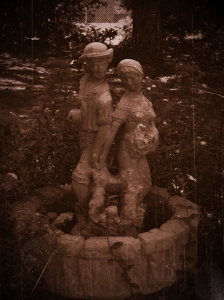Does writing horror give you the horrors?
The horror genre is one of the most difficult genres to write in. This is because the story has more to do with the way it’s told than the story itself. A good romance or drama can have a great plot with average writing, but a good horror story has to have good writing in order for it to succeed. So how do you write a good horror story? Here are some tips from an avid horror fan:
What scares you?
One of the best ways to give your work more impact is to write about something that scares you. Be it the monster in the closet, the feeling of someone else in the room, or your neighbor’s vacuum cleaner that just doesn’t feel right, if you are freaked out then you can transfer that feeling into your character and thus into your reader.
Where do you get scared?
Settings are often underrated, but with a genre that thrives on atmosphere, they shouldn’t be neglected. The cliché of graveyards and abandoned houses on a stormy night have been overused, so think of a place that makes you feel uneasy. It could be a children’s playground after dark, the desolate street corner in the middle of the day when everyone is at work or your normal looking basement that just doesn’t feel right. Regardless of what your story is about, remember to take advantage of your settings to emphasize the mood or to create a sense of unease or dislocation.
Would you do that?
When the crazed killer is chasing the young teenage cheerleader through her house, would she really run straight past the front door and up the stairs to the second floor (like we’ve seen in so many teen slasher movies), or would she bolt through that door and search for help instead? Ask yourself what you would do in that situation and let your answer depict the characters actions. Character’s actions should seem like the most likely choice for that person to make and not like an action chosen merely to advance the plot.
Got a case of that Writers Itch?
Have you felt the need to write a specific story but stopped because you’ve felt it’s all been done before? Don’t let that stop you from trying your hand at the haunted house story; give it your own unique touch by writing it with your own characters, your own ghosts and most importantly your own words. Because that’s what we writers do: we take a plot, an idea or a person and we make it our own.
Be elegant:
For me, the key to a good horror story is elegance. The finely woven tale of suspense and tension, mixing the known with the unknown, is far more terrifying than an axe wielding psycho who slashes his way through the plot and characters. Subtly often has more of an impact than the in-your-face blood and guts style, so be cunning and you will catch your reader off guard.
Ultimately, horror comes down to finding the right combination of plot, atmosphere and character. What scares your reader should terrify your character because if your character isn’t scared, your readers won’t be either. And remember this valuable piece of advice: when it comes to horror, it’s not the story that makes it good but the way that it’s told.


